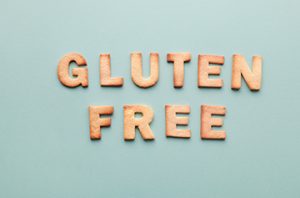




Opt for naturally gluten free choices.
Sometimes, food you think is healthier isn’t. Consider fat free yogurt. Manufacturers remove the fat from yogurt, but it’s not as palatable that way, so they add sugar. When they remove gluten from products, they may add more salt, saturated fat or even sugar to make that food have a better texture and flavor. Unless you are gluten intolerant or have Celiac disease, increasing any of those things in your diet isn’t a healthy option. Go for naturally gluten free foods like oats, brown rice and quinoa.
Newer types of flour can replace high gluten wheat flour.
There are more and more naturally gluten free options that are now available, like almond flour. It’s flour made from blanched ground almonds. You can make it at home by processing 90 almonds for one cup of flour. If you do have a problem with gluten and buy premade flour, check on the label to make sure it wasn’t ground where they mill products that do contain gluten and could be contaminated.
Look for food made with amaranth or buckwheat flour.
Some people make their own gluten free products. It was often something you had to do if you had Celiac disease or gluten intolerance just 20 years ago, before it became well-known to be a problem. Whether you make your own or purchase food that is gluten free, finding ones made with buckwheat flour or amaranth can fill the gap. Both may look like grains but are pseudo cereal. Buckwheat is a better substitute, since food made with amaranth can leave final products crumblier.
- Brown rice is naturally gluten free and a very healthy option. Brown rice can be made into flour that’s exceptionally healthy and has benefits for weight loss, heart protection and lowering blood glucose levels.
- There are many gluten-free bread options. Some are made with a combination of nuts and seeds, which include whole grains like millet, buckwheat, quinoa and hemp seed. There’s even potato bread. Where you once had only one option or made it yourself, there’s a lot more from which to choose today.
- Many gluten-free baked goods are only found online and can be quite pricey. You may also have to buy in bulk and since most don’t have preservatives, they have a short shelf life.
- You can swap out alternative vegetables for bread, like using toasted sweet potato slices instead of bread or portabella mushrooms. If you’re buying gluten bread, look for bread that’s certified gluten free by a third party.
For more information, contact us today at Travel Trim!
